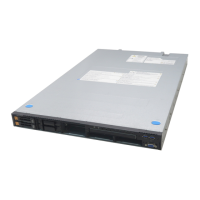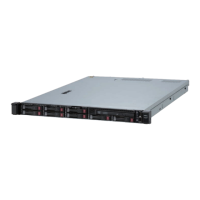Do you have a question about the NEC Express5800 140He and is the answer not in the manual?
Information needed for proper and safe server operation.
Names and functions of components, handling, and disposal.
Guide to selecting site, unpacking, connecting, and powering on.
Instructions for system configuration using BIOS and utilities.
Describes OS installation using Express Setup.
How to install and use server utilities.
Information for maintaining server operation.
Information for solving potential system problems.
Instructions for upgrading system with optional devices.
Provides server specifications.
Supplementary notes on server usage.
Lists factory-set IRQs and I/O port addresses.
Describes installing Windows Server 2003 x64 Editions.
Describes installing Windows Server 2003.
Table for server configuration records.
Explains text conventions used in the guide.
Lists items included in the server package.
Explains the purpose and placement of warning labels on server components.
Provides essential safety precautions for server usage.
Guidelines and warnings for safe power supply and cord usage.
Procedures and precautions for installing, moving, storing, and connecting the server.
Instructions for safely cleaning and working with internal server components.
Safety precautions and guidelines for operating the server.
Notes to ensure successful server operation and prevent malfunctions.
Observations for transferring the server or software to a third party.
Lists components that require periodic replacement.
Guidelines for disposing of the server and its components.
Information on obtaining after-sales service and support.
Tips for setting up an ergonomic and healthy workspace.
Introduces the server's capabilities and features.
Illustrates and labels the external components of the server.
Identifies and explains the switches and LED indicators on the front panel.
Shows and labels the ports and connectors on the rear of the server.
Lists the high-performance, expandability, and availability features.
Describes the server's power supply capabilities and redundancy.
Details the available bays for installing peripheral devices.
Explains memory mirroring and RAID features for enhanced reliability.
Describes the BMC's functions for system monitoring and management.
Introduces EXPRESSBUILDER for server setup and utility installation.
Describes ESMPRO server management software.
Procedure for locking and unlocking the server's front door.
Instructions on using the power switch to turn the server on and off.
Describes the Power On Self-Test (POST) diagnostic feature.
Details the sequence of operations performed during POST.
Lists POST error messages and recommended actions.
Procedure for safely powering off the server.
Explains the SLEEP switch for power-saving mode.
Describes the floppy disk drive and its usage notes.
Instructions for using the CD-ROM drive safely.
Presents a flowchart detailing the server setup process.
Precautions and guidelines for choosing a suitable server installation site.
Instructions for inspecting and unpacking the server system.
Guides on connecting peripheral devices to the server.
Instructions for safely connecting the power cord to the server.
Core setup and power-on procedures.
Procedure to back up system information for recovery.
Information on the BIOS setup utility and its purpose.
Step-by-step instructions to start the BIOS SETUP utility.
Explains the BIOS setup utility interface and keyboard key functions.
Examples of common BIOS configurations for system operations.
Options for setting BIOS passwords and securing system switches.
Configuration for installing PCI boards with hot-plug functionality.
Overview of the SETUP utility's main menus and parameters.
Details the configurable items in the BIOS Main menu.
Explains various processor-related settings in the BIOS.
Describes settings available in the BIOS Advanced menu.
Settings for memory configuration, including error handling and hot-add.
Configuration options for PCI slots and their Option ROMs.
Settings for configuring serial, parallel, PS/2, and USB ports.
Server-specific settings including NMI, FRB policy, and boot monitoring.
Settings for console redirection via serial port for remote access.
Defines the boot device priority for starting the server.
Monitoring server faults using ESMPRO during operation.
Explains server status indicators and their meanings.
Detailed table of POST error codes, messages, and recommended actions.
Displays POST progress and error codes on the virtual LCD.
Guidance for diagnosing and resolving server issues.
Troubleshooting common server issues like power and display problems.
Troubleshooting issues during OS installation and operation.
Troubleshooting OS installation failures related to disk array configuration.
Safety precautions for installing or removing optional devices.
Measures to prevent static electricity damage during component handling.
Steps to prepare for installing or removing server components.
Installation and removal of 3.5-inch hard disk drives.
Steps to install and replace power supply units.
Installation and removal of devices in the 5.25-inch bays.
Information on PCI slots, hot-plug functions, and PCI board types.
Factors to consider when configuring disk arrays.
Procedure for installing and removing non-hot-plug PCI boards.
Procedures for Hot Add, Hot Remove, and Hot Replace of PCI boards.
Procedure for installing or removing memory boards and DIMMs.
Procedure for installing or removing the processor board.
Illustration of processor board sockets and VRMs.
Technical specifications of the Express5800/140He server.
Description of floppy disk types and usage.
Notes for using the CD-ROM drive with the server.
Data handling guidelines for DAT, DLT, and AIT tape media.
Important notes and usage tips for the keyboard.
Notes on mouse operation, cleaning, and usage.
Factory-set PCI device interrupts and assignments.
Factory-set I/O port addresses for server components.
Safety precautions for installing and accessing rack cabinets.
Warnings and cautions for installing the server in a rack-mount configuration.
Preparatory procedures for installing the server on a 19-inch rack.
Unpacking the rack conversion kit components.
Lists the tools required for rack mounting preparation.
Procedures for safely powering off the server before rack mounting.
Steps to remove components from the tower model for rack conversion.
Procedures for installing rack conversion kit components onto the server.
Procedure for mounting the server onto the rack sequentially.
| Memory Slots | 12 DIMM slots |
|---|---|
| Network Interface | Dual Gigabit Ethernet |
| Storage Bays | Up to 8 x 2.5" |
| RAID Support | RAID 0, 1, 5, 10 |
| Power Supply | Redundant power supply options available |
| Operating System Support | Windows Server, Linux |











